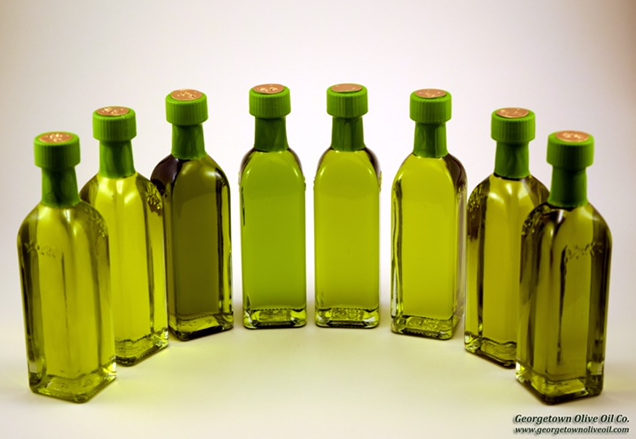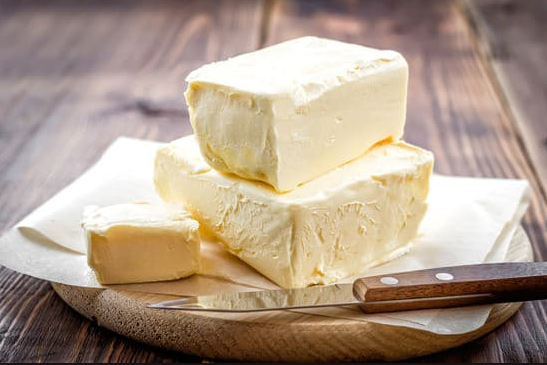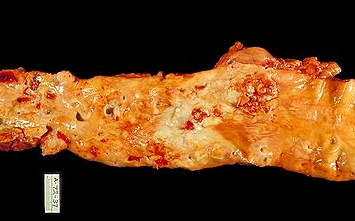Working Through the Pain: Priming Your Mind for Change
- At July 03, 2017
- By Katherine
- In Articles, News
 0
0
I don’t know if you’ve noticed, but we humans don’t always think or behave rationally, even when it comes to our own self-interest. In fact, we can be so stubborn that we stand by while watching our own self-destruction. Sure, we want to make positive changes in our lives, and may even know what to do, but often can’t seem to overcome our inertia.
Changing your thinking, your emotions, and perhaps parts of your self-image may be necessary for becoming happier, healthier, more energetic, or achieving your ideal body weight. In the third installment describing my recent life transformation, I am sharing my progression through these steps (for the umpteenth time in my life), toward recovery from some difficult times.
Whether healing from an illness, surgeries, or even just experiencing a long run of being too busy to exercise or take care of yourself… Beginning again, becoming fit, or healthy can be a painful process and can seem almost impossible to achieve.
In my case, after knee and back surgeries, spending a good deal of time being sedentary, and even bed-bound, I tried jumping back into life too quickly many times. These false starts had the effect of delaying my healing, furthering my pain, exhaustion, and depression. I had to learn to take baby steps (funny, something I’m told I’m very good at helping my clients with while working toward improving their lives). I had to notice how my thinking, self-talk, emotions, and even my own identity were interfering with my successful recovery.
One of my revelations was that my self image as a fit and physically active person affected me negatively and slowed my progress for a couple of reasons. First, my inability to be physically active while recovering from surgeries made me perhaps more depressed than would be expected. That depression kept me from the world, isolated, and of course, we all know, that made my situation worse: physically and psychologically. Second, when I finally got the will to start moving, I didn’t know how to start slowly. I jumped right in, taking difficult yoga classes and walking too much. That caused pain and discouraged me from continuing to try. And this prolonged my convalescence.
After many such failures, I decided to try joining the world again. But this time, taking my own advice and doing it one baby step at a time! For this to work, I had to change my thinking. It is the cornerstone of any behavior change: Noticing your thoughts and deciding how to react to them. I decided it was time to notice the negative thoughts in my head that led to counterproductive behavior. Noticing self-defeating – and irrational – thoughts, such as “I’ll never be myself again,” or “I don’t want to go out and be seen unless I’m completely back in shape,” allowed me to change them to more rational and productive thoughts, such as, “of course, I’ll always be myself! And, besides, a little improvement is good for anyone,” or “people will still accept and like me, even if I’m not in great shape.” This officially is “cognitive therapy,” an accepted pre-requisite for behavior change, and one I use extensively to help my clients. My willingness to begin this process allowed me to accept my humanness, my need to proceed slowly. I decided to share my experience after finding so many people were surprised that this process could be difficult for me, the “expert.” I also wanted to share my experience so others would feel assured that this transformation is possible for anyone.
Before you can change the way you think, though, you’ll need to develop a sense of urgency about your goal, if you haven’t already. A sense of urgency, according to The Dalai Lama in “The Art of Happiness” – and scholars in this important field of psychological research, can be achieved two ways:
1) Remind yourself of your positive vision for success. For example, visualize yourself at your ideal fitness level, your goal weight, or see yourself feeling happy, healthy, energetic, and confident (see “Dream” in my book, Diet Simple), and
2) Ponder the negative consequences of not making a particular behavior change (a little fear can be a good thing – but just a little). I mean, after all, did I really want to feel terrible for the rest of my life? This may seem like an absurd question to ask yourself, but when your behavior doesn’t lead to positive outcomes, what else could the counter-productive behavior mean? What outcomes could you possibly expect besides negative ones? You may try this yourself by asking, for instance, in the morning as you’re considering two options: getting out of bed to exercise or sleeping just a little longer, “Do I want to feel good today? Or do I want to feel crummy today?” Another example, as you’re driving home from work and deciding to grab some carry-out or to go home to eat the healthy meal you’ve already planned. Ask yourself: “Do I want to achieve my weight loss goal (insert positive vision here) or will I accept being the same weight and having the same health problems for another year?” “Do I want to stop taking these darn medications or will I be taking them forever – and even increasing the dosage? What will my doctor say?” “What kind of example am I setting for my children, my spouse? Is this a behavior I can be proud of?” etc. You get the idea…
ACHIEVING INCREASED HAPPINESS
Outlining the consequenses of your actions and acting on your long term goals, as opposed to momentary desires, helps you grow as a person and become a happier person, according to scientific research. It increases your general happiness level because you are making decisions which contribute to your long-term goals.
THE DOWNWARD SPIRAL OF GIVING IN
Usually, when we do something that feels good momentarily, such as giving in and staying in bed for 30 more minutes of sleep in the morning instead of exercising, or grabbing a coffee cake at the coffee shop when we originally just planned on buying coffee, our happiness level may increase (“oooh, this feels yummy!”) – but it’s only a temporary blip of happiness. It goes back to the same level it did before – once the temporary experience wears off – and nothing changes for the better in our lives. We may even become more depressed as we continue to “give-in” to these unfulfilling momentary desires and dive into a downward spiral.
MAKING THE HARDER, BUT MORE SATISFYING CHOICE
If, instead, we say to ourselves, “I’m getting out of bed NOW! I’ll feel terrible if I don’t, and I’ll never achieve my goals,” or “Will stopping to get carry-out change my life for the better? I’d be better off going home and eating something healthy as I want to lose weight, lower my cholesterol, etc,” or “I really don’t need that coffee cake, and I’ll feel terrible after eating it, and will it make me happier at the end of the day?” “Will this increase my happiness for the short term? Or for the long term?” Another more extreme example might be a drug addict relapsing. It feels great momentarily, but the feeling doesn’t last.
When you make a more thoughtful decision, which contributes to your longterm health – physical or psychological – you are more likely to achieve your life’s hopes, dreams and goals, you can actually increase your happiness level, feel happier more often and grow as a person.
WHY IT’S NOT ALWAYS EASY
It is not always easy in our society to make the healthy decision. It’s easier – and the norm, in fact – to be unfit, overweight and unhealthy. But, I’m convinced it is possible to be healthy in an unhealthy world with planning, practice, determination, and support (I’m here any time you need me!) – Besides, what’s the alternative?
It takes effort to train your mind to work this way, but this is how we become better people and we advance as a society.
Meditating on the Potomac: First Steps to Overcoming Barriers to Regaining My Identity
- At June 26, 2017
- By Katherine
- In Articles, News
 1
1

My friend Katy and I Experiencing Mindfulness While Kayaking on The Potomac River (Photo by Ari from Nauti Foods, the floating “food truck” on The Potomac River)
I’m sharing my journey toward getting my life back, after some rough times, almost losing my health, and my sense of self, because I know the process can be difficult – and even painful – for anyone. I know, because it’s been my job – and my passion – for more than 25 years: helping my clients transform their health and their lives to better themselves and to increase their happiness. Ironically, I haven’t experienced these joys for myself for quite a while, so it’s my turn to tough it out. And I can tell you, after many setbacks, it’s not for sissies!
In my story’s first installment, I described the importance of mindfulness as a foundation for self understanding and successful life change. It reduces anxiety, helps you focus, and leave worries about the past and future behind. This helps you work through problems more effectively, according to scientific research from the National Institutes of Health. I needed to keep my focus on the present, to relax, to feel hopeful, and to force myself out of my depression. I needed to be willing to work at overcoming my exhaustion after almost two years of knee and back pain, ultimately leading to surgeries on both, and sidelining me for the duration.
You see, I spent a lifetime being physically active. This was a part of my identity, a way I excelled in the world. I started gymnastics in pre-school (it was called “tumbling” then). I went on through my adulthood to continue practicing gymnastics, cheerleading, dance, swimming, scuba, fencing, climbing, skating, archery, aerobics, strength training, stand up paddle boarding, yoga …You name it, I’ve done it, and excelled almost immediately at anything I tried (even basketball, though I’m 5’2″).
It’s funny that I only recently realized that this loss of my physicality may have been the underlying cause of my depression and endless exhaustion – because it was an integral part of my identity and self-worth. I never realized how much pride I took – wrongly or rightly – in being fit, active, and in exceptional (not just good) shape. I was always a leader, a teacher, and set the example for thriving and living a healthy life. I bounced back from negative experiences easily, and taught my clients to do the same. But somehow I couldn’t this time. I actually felt embarrassed to let anyone know, outside a few of my closest friends and family, just how badly I felt. I stopped exercising (by necessity), I gained weight, I stopped going out, I stopped socializing, and even dealing with my business. I isolated myself, even though I knew this behavior was hurting my health in every way.
I finally came to understand why I was not recovering as expected while listening to a friend’s account of his wife’s reaction to the fear of potentially losing her singing voice (she’s a singer) after the successful removal of a stage 1, non-malignant cancer on one of her vocal cords. The experience left her inconsolable, silent, uncommunicative, miserable, and angry with everyone. No amount of love, support, or reassurance from the experts helped. Her reaction and behavior went beyond normal proportions. Why? Perhaps because using her voice was an integral part of her identity, and the fear of losing it, even an irrational fear, was too frightening to face, let alone talk about, or deal with.
Facing and working through that kind of loss and fear can be paralyzing. Admittedly, it’s taken me way too long to begin my recovery. And every day I’m too tired – or too stubborn – to advance, I damage myself further.
If you inexplicably don’t take steps to improve your life in ways you know would be helpful – and your loved ones are encouraging – perhaps exploring how your self image has been or will be affected, will help get you started. This is a major barrier to overcome for anyone trying to change a habit, even one which is self-destructive.
Mindfullness has been essential for me to finally start taking the small steps toward getting my life back, and feeling like myself again. (Funny, taking small steps is the cornerstone of my life-change programs, and my book, Diet Simple.) Studies clealry show you can achieve mindfulness through meditation. But I believe any activity that absorbs your heart and mind, relaxes you, and focuses you on the present moment, can improve your mindfulness. Mindfulness allows you to work through your worries more effectively, to let go of thoughts and feelings that won’t help, while concentrating on positive behaviors that will advance you toward your long term goal of increased happiness, however you define it.
This weekend, mindfulness came to me through kayaking with a friend on the beautiful Potomac River. What wonderful resources in Washington, DC (we rented a kayak from the Key Bridge Boathouse)! I was able to step into another world, completely relax, and focus on Mother Nature, just a few blocks from home. A couple of weekends ago, I escaped to the Pennsylvania countryside. Music and reading elevate me too (anything but the news, please).
Personalize your way of becoming more mindful so you can start making small steps to improve your life. And try to be patient with yourself.
More later ..
Katherine’s Crepe-Style Swedish Waffles with Succulent Strawberries

Late spring and early summer strawberries are especially sweet and succulent, especially if they are grown locally and picked at peak ripeness. I experienced a very decadent way of enjoying them while relaxing during a recent respite in the Pennsylvania countryside, with my friend, Anna: Smothering heart-shaped Swedish waffles. These aren’t ordinary waffles; they’re crepe-thin, crispy, buttery, and simply divine. Traditionally served on “Waffle Day,” in Sweden, celebrating “Our Lady’s Day,” on March 25th, 9 months before Christmas (also known as the Christian holiday of “Annunciation”). Enjoy…
Katherine & Anna’s Luxurious Swedish Waffles with Strawberries
Serves… You decide the number!
3 eggs
1 dl (3.4 ounces) Flour
6 dl (2.4 cups) Whole Milk (or 1% Milk)
1/4 cup melted, cooled Butter (or Canola Oil or Walnut Oil for a nutty flavor)
Pinch of Salt, Sugar, or Vanilla (optional)
Topping:
1/2 cup (or more) Plain Yogurt, Whipped Cream or Ice Cream
1 cup (or more) Strawberries, other fruit, or preserves like Swedish Lingonberries
1 teaspoon Maple Syrup or Confectioner’s Sugar (optional)
A sprinkling of chopped Roasted Nuts (optional)
1 sprig of fresh Mint (optional)
Whisk the ingredients together in a pitcher. Grease the waffle iron with butter or oil for the first waffle. Since butter (or oil) is in the recipe, the waffle iron will not need to be greased again.
Pour a small amount of the mixture into the Euro Cuisine Eco Friendly Heart Shaped Waffle Maker per product instructions. When golden brown, carefully lift the waffle and place in the center of your plate (smother in butter if you’re being especially care-free and decadent). Place the yogurt, ice cream or whipped cream, berries or other fruit, and roasted chopped nuts, if you wish, on the waffle. Drizzle maple syrup on top. Finish with a sprig of mint.
Lingonberry preserves are widely used in Sweden. They’re sweet and tart, and taste great with plain yogurt or sour cream. They make great toppings for crepes and Swedish waffles.
If you want more of a decadent cake-like dessert, thinly spread butter on the waffle, then sift confectioner’s sugar on top.
NOTE: Using butter, whole milk, ice cream and whipped cream make these delectable waffles occasional dessert treats, and I recommend using them sparingly. When Anna and I prepared them last weekend, we used 2% milk and butter in the recipe. I topped my waffle with Chobani nonfat plain yogurt with a little maple syrup drizzled on top. Anna used whipped cream!
How A Little Help from my Friends and Mindfulness Meditation Saved my Life!
- At June 11, 2017
- By Katherine
- In Articles, News
 0
0
I experienced tough times the past couple of years. Of course, I’m no exception. We all have tough times. That’s life, isn’t it? “You can’t feel joy unless you’ve felt pain…” But after being in pain and inactive for so long, I got to the point where I was physically and mentally exhausted and depressed. Symptoms like debilitating headaches and stomach pain took over and kept me from living life fully. I had to change, but it was tough. I was taking one step forward and two steps back for a while.
We’ll talk about my personal issues during the past couple of years in my next installment. For now, I’ll be in the present and try to talk you into the same. You may know that I work with clients helping them turn their lives around, to live healthier, happier, and more energetically, through gentle counseling in nutrition, exercise, spirituality, stress management, and life organization. So, I feel fortunate to know the process. I thought I would share my “metamorphosis” with you, so perhaps you might gain some insight for yourself
Attempting to recover, my first step was allowing myself to have more positive experiences. I say “allowing myself” because I had to take action to get out of my negative state. No one could do it for me. I forced myself to start listening – and responding – to the friends, loved ones, and health care professionals in my life to get out of isolation, back to socializing a little more with good friends, participating in good causes, and exercising a little. This meant “working through the pain,” an admonishment I came to detest, but one I knew was true (I had already been evaluated medically).
I started reading a book called “The Book of Joy,” co-authored by The 14th Dalai Lama and Archbishop Desmund Tutu. Two of the most joyful, spiritual, and productive men on earth who have suffered their share of heartache. If they can overcome their obstacles – exile, refugee life, apartheid, targets of hate and prejudice – can’t we?
In “The Book of Joy,” both spiritual leaders emphasize meditation or prayer as the foundation of a happy life. They meditate, pray, have quiet time, for several hours every morning. Can I do that? Will I do that? Should I expect my clients to do that? Well, probably not. But I and my clients can personalize our own way to re-create happy lives. There are so many “centering” techniques that are scientifically proven to help many health conditions. In the past, I learned deep belly breathing and progressive relaxation as techniques, but I had gotten away from the practice.
Second step: I decided my personalized way to center myself and become more mindful would be Mindfulness Meditation with a little yoga thrown in. I do a little in the morning, and spurts here and there through the day. And if I can do it, you can do it – that is, in your own way. Like you, I’m a hard working professional (and I’m including stay-at-home Moms and Dads). I don’t have a lot of time. But as a health care professional and life coach, I know by many years of experience that there are certain priorities in life that cannot be ignored, or the consequences are dire.
Changing the way you think and calming your mind are the cornerstones of understanding yourself and achieving any behavior or life change. But you have to learn how to be “mindful” first. “Mindfulness is the ability to be present, more focused, and clear; for concentration to be more sustained, and for attention to be on what’s happening, instead of on thoughts, memories, and associations,” said Jack Killen, when he was the Deputy Director of the National Institutes of Health’s National Center for Complementary and Alternative Medicine.
“There is neurobiological research that demonstrates that mindfulness engages pathways in the brain… [they] allow your brain to be focused on what is here and now… [so you’re] more able to think through a problem, less likely to be distracted by issues that won’t help,” said Killen. “Meditation is one way of exercising neurological pathways in the brain which help us become more mindful.”
So, how do I or you choose a way to become more mindful… a way that fits your lifestyle, beliefs, and personality? Here’s what I did one weekend toward this goal: I left the city to visit a good Swedish friend in the beautiful and serene countryside of Pennsylvania.
During the drive to the Pennsylvania countryside, I called a few friends I haven’t talked to in a while. That felt good. I was enjoying the drive. My headache was disappearing. When I got there, my happiness was overflowing, my headache was gone. Being in the countryside, and being with a good friend, somehow motivated me to pop out of bed early (my headache came back, ugh!). I started with a cup of coffee (strong, smooth Swedish style), then sat in a comfortable chair facing the trees. I began deep belly breathing, centering my mind on the moment, checking each part of my body for signs of stress, and then relaxing it (progressive relaxation). I put on some favorite music (rock ‘n roll was my pleasure at the moment). I spontaneously got up and started dancing. I continued with the deep breathing and some yoga exercises. My headache finally left me again. The worst of my stomach pain was gone went I recently went off anti-inflammatory medications I was taking, based on my doctor’s and pharmacist’s recommendations.
Am I cured? Well… Life is a continuous learning experience. I work at my deep breathing, stretching and light exercising continuously. Training your brain to be more mindful “is a bit like going to the gym and working out your muscles. It takes time and practice for the beneficial brain pathways to become established, similar to building muscular strength and flexibility,” said Killen.
Along with the breathing exercises, I made an effort to get back in touch with and socialize with the people I care about. But those were only steps one and two! I still needed to work on much more. Getting back to exercising my body more regularly was the next big hurdle. I don’t know how long it will take to get to my former fit self, or even a better self. But at least I’m off to a good start. And you can be, too! But be sure to check with your doctor so any serious medical condition is ruled out.
I’ll keep you posted!
Springtime Strawberry and Goat Cheese Salad
Four Tips for Choosing the RIGHT Olive Oil
My clients regularly ask me how important using olive oil is. Of course, we have all heard about olive oil’s health benefits. But there is still understandable confusion. I’m regularly asked, “How does olive oil compare to other oils? How does it work? What kind of olive oil is best? How much should I use?” My answer: It depends…
These are important questions as more and more science is finding that the nutrients in olive oil, called “polyphenols,” are responsible for its superior health benefits. Increased longevity, reductions in cardiovascular disease, metabolic syndrome, obesity, diabetes, and various cancers, are among the benefits, confirmed a 2015 review of studies published in the British Journal of Nutrition. But olive oils can vary significantly in their polyphenol content. There are four times more phenolic compounds in high quality extra virgin olive oil versus low quality or refined olive oil – 232 mg vs 62 mg per kilogram of oil – so it is important you choose the right olive oil.
“99 percent of olive oil’s health benefits are related to the presence of the phenolic compounds, not the oil itself,” said Nasir Malik, NIH Scientist. “And without the polyphenols, you might as well use the less expensive canola oil.”
Surprisingly, when tested by the U.S. Department of Agriculture, polyphenols were low in most commercially available olive oils. They also didn’t live up to international quality standards defining extra virgin olive oil. These standards require an acidic pH, necessary to protect the nutrients. And the olive oils’ pH had degraded – even in the highest end gourmet shops – according to studies conducted at the University of California at Davis Olive Center.
That’s because olive oil’s polyphenol content diminishes, and its acidic pH degrades over time, as days, weeks, and months go by after harvest. Other factors play a role, too: the harvesting methods, the age of the trees, the ripeness of the olives, the processing, and the storage. Since time, heat, and light affect polyphenol content, choose olive oil that:
- Is no more than one year old (look for the harvest date on the label),
- Is in an air-tight, dark glass, or tin container,
- Is stored in a cool environment, and
- Smells and tastes like olives, which could be fruity, grassy, or peppery.
Is olive oil better for your health than other oils? The answer is yes, according to a new study in Nutrition & Diabetes. For one, “The risk of type 2 diabetes reduced by 13% with increasing intake of olive oil up to 15 to 20 grams per day (3 to 4 teaspoons),” according to the study. When refined olive oil, or other oils, were compared, fresh extra virgin olive oil was more beneficial for the prevention and management of diabetes. It was associated with lower fasting blood glucose, and Hemoglobin A1C, a three-month average of blood glucose and an important marker for diabetic complications.
Other studies have found high polyphenol olive oil improves health in many ways:
- Increasing levels of good cholesterol (which helps clear artery-clogging fat from the bloodstream),
- Improving artery wall health and functioning (important for healthy blood pressure, blood flow, reducing blood clots, and the risk of cardiovascular disease), and
- Reducing oxidation and inflammation processes involved in many diseases from infections to cancer.
To take full advantage of your olive oil’s flavor and health benefits, save your recently harvested, high quality extra virgin olive oil for drizzling on vegetables, salads, or anything! When cooking with high heat, i.e., stir frying, use canola oil or nut oils instead, as they can be less expensive, and have higher smoking points so can tolerate higher temperatures without burning.
My favorite vinaigrette: Mix 1 or 2 tablespoons of olive oil with 1 or 2 tablespoons of freshly squeezed lemon juice, salt and pepper. The proportion of olive oil to lemon juice depends on how tart you like your vinaigrette. You can also add a smidge of mustard or herbs. Serve!
One shop in Georgetown which consistently sells high quality olive oils is Georgetown Olive Oil company. It is locally owned and operated at 1524 Wisconsin Avenue. The shop displays rare-to-find information, such as the oils’ date of harvest, provenance, and detailed descriptions. And you can taste any of the oils at any time. I highly recommend this cozy and friendly specialty shop where they clearly understand what makes a great olive oil!
For more detailed information on olive oil, read my Washington Post article: “Most Olive Oil is not as Healthful as You Think”
My Favorite Asparagus Recipes
Spring has always seemed more like the new year to me than January first. Perhaps my inspiration comes from longer, warmer, sunlit days, delicate vegetables and fruits, like asparagus and strawberries, finally popping up, flowers blooming everywhere. Neighbors begin venturing out of winter hibernation with their first happy greetings of the year, with sounds of their children playing in the street. Celebrations are occurring all over the city showing off our beauty and splendor to the tourists. In fact, I think I’ll make my New Year’s Resolution today! And it’ll be easy – preparing batches of veggie salads – or soups, at least weekly, to help me and my friends shed some of our winter “padding.” Making delicious veggies your main course at dinners (lunches, too) helps manage your weight easily. Asparagus is one of my major harbingers of spring. Here I’d like to share some of my favorite asparagus recipes excerpted from my book, Diet Simple Farm to Table Recipes: 50 New Reasons to Cook In Season!, where you’ll find dozens of other seasonal recipes:
Chilled Asparagus in a Creamy Tarragon, Shallot and Roasted Walnut Vinaigrette
Salad of New Potatoes and Asparagus with Lemony Garlic Herb Mayonnaise
Pasta with Pesto, Roasted Asparagus and Cherry Tomatoes
Asparagus Salad in a Vietnamese-Style Dressing
Is Butter Good For You?
- At April 10, 2017
- By Katherine
- In Articles, News
 0
0
Butter is Back! And it’s even good for you? These declarations can be illustrated by the dizzying array of delicious butters now available: besides the old-fashioned American butters, you can easily find the extra rich Irish and French Butters, and a variety of premium, grass-fed, and organic farmers market butters extolled for their superiority, and with a premium price tag to match. Is this a food lover’s dream come true? Even some nutritionists have joined the bandwagon, and yours truly has been confused.
This seemingly good news may have started with the widely read earth shattering 2002 New York Times Magazine story, “What if it’s All Been a Big Fat Lie?” by Gary Taubes, featuring a big, fat, juicy piece of steak on the cover. More recently, Mark Bitman wrote a 2014 New York Times story covering a scientific study in the March 2014 Annals of Internal Medicine journal concluding that eating saturated fat, the so-called artery-clogging, demonic fat in butter, did not raise a person’s risk of heart disease. This exciting news, covered in just about every print and broadcast media outlet around the world, seemed to reverse decades of medical advice saying the opposite was true.
So, how do we hash out the truth?
This is an important question as one in every four deaths of Americans are from heart disease, so it’s a critical issue concerning the health of the majority of Americans – and my clients, who rely on me to get it right. After all, what’s more important than your health?
Upon exhaustive research, I’ve found the answer, interestingly, is not too different than conclusions made by Harvard scientist, Ancel Keys, and other respected scientists in the 1950s, 60s, and 70s: that the type of fat – not total fat – is responsible for the rise in heart disease because of its affect on blood cholesterol levels.
But how important is blood cholesterol level? A multitude of factors increase heart disease risk, such as calcification, inflammation, blood pressure, high triglycerides, diabetes, obesity, inactivity, smoking, family history, gender, and age. But, apparently, the correlation between high LDL(bad) cholesterol levels and heart disease has been well established and is still deemed significant to your risk of heart disease and your health. Conclusion: Keep LDL low (under 100) and HDL high (Over 40) to prevent heart disease risk.
And the most recent clinical study – the gold standard of scientific studies – has confirmed the worst (if you’re a butter lover, that is): Replacing the saturated fat in butter with unsaturated oils, not only raises HDL (good) cholesterol – which clears fat and reduces placque in the arteries – using oils instead of butter also reduces artery-clogging LDL (bad) cholesterol from the bloodstream. Conclusion: Use oil instead of butter to reduce heart disease risk. So, it seems the advice hasn’t changed since Ancel Keys discovered the superior health of Mediterraneans who used oil instead of butter.
In a recent Harvard School of Public Health’s analysis of the controversy, the scientists review decades of research showing the successful reduction in heart disease risk by doing things like replacing butter (high in saturated fat) with oil, replacing steak with salmon, and eating a plant-based diet based on fruits, vegetables and whole grains for the reduction of LDL cholesterol, the increase in HDL cholesterol, the resulting effect on lowering heart disease risk, and improving your overall health. Conclusion: “Butter is not back!” said Harvard’s Walter Willett.
So, what about those New York Times articles? Well… Caveat Emptor! Don’t believe everything you read, and consider the source (be sure the information comes from a peer-reviewed, scientific journal, and compare it to other established science).
To say this Swede, raised on cream and butter, is disappointed, is an understatement! But I still use luxurious butter sparingly, when I deem necessary!
And it’s a relief to know that all these years, helping my hundreds of clients lower their LDL and raise their HDL cholesterol levels by substituting butter with healthy oils and other lifestyle changes has not been a waste! WHEW! No rioting necessary 🙂
A New Recipe For Improving Seasonal Allergy Symptoms
- At March 06, 2017
- By Katherine
- In Articles, News
 0
0
My clients who suffer from seasonal allergies were hit hard this year – and earlier than usual. The warm February temperatures caused Washington’s flowering trees and shrubs to come out of their winter slumber gloriously. Our famed cherry trees and camellias are almost in full bloom. Even my hydrangeas’ buds are peaking out.
This beautiful display does not feel so beautiful for people with spring allergies. They often have symptoms, caused by the flowers’ pollen, which impact their quality of life: lack of sleep, reduced productivity at work or school, emotional stress and embarrassment…. and the medications designed to improve those symptoms, depending on the person, may be no better, and cause dry mouth, sleeplessness, and drowsiness. A new study set out to test if certain strains of beneficial probiotic bacteria would reduce symptoms and improve quality of life during allergy season for its sufferers.
The study, published in the American Journal of Clinical Nutrition, the first randomized, double blind, placebo-controlled trial – the gold standard of human research – testing this hypothesis, divided 178 allergy sufferers into two groups and tested them during spring allergy season for eight weeks. One group received the probiotic supplement*, the other received the placebo.
The study found the probiotic group experienced improved quality of life symptoms compared to the placebo group. That said, scientists are still working out which of the beneficial probiotic bacteria work best with individual allergens, when to start taking them, and which probiotic bacteria will react most positively with a person’s specific microbiota (the 100 million bacterial organisms in your digestive tract), as each person’s microbiota is different. They mentioned that starting probiotics at a younger age may be more effective, too.
In the meantime, I believe eating foods which naturally contain beneficial probiotic bacteria, such as yogurt, is the best solution for trying to reduce your allergy symptoms. In fact, I recommend eating yogurt every day! Though, I don’t recommend counting on supplements because, as of now, no probiotic supplements have passed the tests allowing them to make a health claim.
Here’s one of my favorite yogurt recipes developed by Georgetown resident, cookbook author, and my friend Najmieh Batmanglij, and found in my book, Diet Simple…
Najmieh Batmanglij’s Yogurt and Spinach Dip
*(Lactobacillus gasseri KS-13, Bifidobacterium bifidum G9-1, and Bifidobacterium longum MM-2 provided by Wakunaga of America Co Ltd)
Vitamin D Boosts Muscle Strength, Power & Velocity While Lowering Body Fat
- At February 21, 2017
- By Katherine
- In Articles, News
 0
0
 A new study reports that Vitamin D effects certain genes which are involved in muscle and fat mass and function. This could mean there is an important yet simple solution to the natural decline of muscle as we age, which could have many benefits – decreasing disease, falls, broken bones, and subsequent hospital and nursing home stays.
A new study reports that Vitamin D effects certain genes which are involved in muscle and fat mass and function. This could mean there is an important yet simple solution to the natural decline of muscle as we age, which could have many benefits – decreasing disease, falls, broken bones, and subsequent hospital and nursing home stays.
As we age, muscle mass and strength decrease, to the point where our muscles actually become “marbled” with fat (think bacon!), reducing their ability to function and our ability to live independent lives, according to the National Institute on Aging. That’s because muscle mass is essential for movement, balance, and even immune function. So if we don’t strength train as older adults, we’re more likely to lose our independence and end up in nursing homes, creating a massive public health burden, according to the study published in the journal PLOS ONE, and partly funded by the National Institutes of Health.
That said, we’ve known for years, and I’ve written about, the importance of working out, eating the right amount of protein, carbohydrate and fat, eating an anti-inflammatory, anti-oxidative diet filled with plant nutrients like polyphenols, (found in tea, fruits & vegetables), and living a low stress life. But there are other factors which come into play that scientists are studying. One may be Vitamin D, the “sunshine vitamin.”
In the past several years, researchers are finding that Vitamin D may be instrumental in preventing diseases from colds, heart disease to cancer. Even multiple sclerosis, parkinson’s disease and insulin dependent diabetes. And now, Vitamin D seems to be correlated with an increase in muscle mass and a decrease in body fat. Yet the most needy population, the elderly, is usually deficient. That’s because Vitamin D is produced by being exposed to sunshine. Today, many of us don’t go outdoors and when we do we’re wearing sunscreen. That particularly pertains to the aging population, whose muscle mass can mean independence – or the loss of it.
How much Vitamin D does improving muscle mass require? What should your blood level be? Ask your doctor, but perhaps also share this recent data with him/her: “[The National Academy of Sciences’ Food and Nutrition Board’s] review of data suggests that persons are at risk of deficiency relative to bone health at serum 25OHD levels of below 30 nmol/L (12 ng/mL). Some, but not all, persons are potentially at risk for inadequacy at serum 25OHD levels between 30 and 50 nmol/L (12 and 20 ng/mL). Practically all persons are sufficient at serum 25OHD levels of at least 50 nmol/L (20 ng/mL). Serum 25OHD concentrations above 75 nmol/L (30 ng/mL) are not consistently associated with increased benefit.”
Most of us will need to get Vitamin D from a supplement because it’s in very few foods (egg yolks, salmon) and most of us don’t get enough sunlight. Again, ask your doctor about your personal situation. But, the latest recommendation from some Vitamin D researchers is 1,000 IU per day but up to 4,000 daily is safe (Vitamin D can be toxic at much higher levels)… This level is higher than the official National Academy of Sciences’ Food and Nutrition Board because they determine how much Vitamin D is needed to prevent rickets (a Vitamin D deficiency disease which softens the bones). They say the jury is still out as to how much is good for your overall health. The NAS scientists believe that more definitive research needs to be done to change their recommendation. In the meantime, it doesn’t hurt for healthy people to increase their vitamin D intake to up to 4,000 IU daily.




















